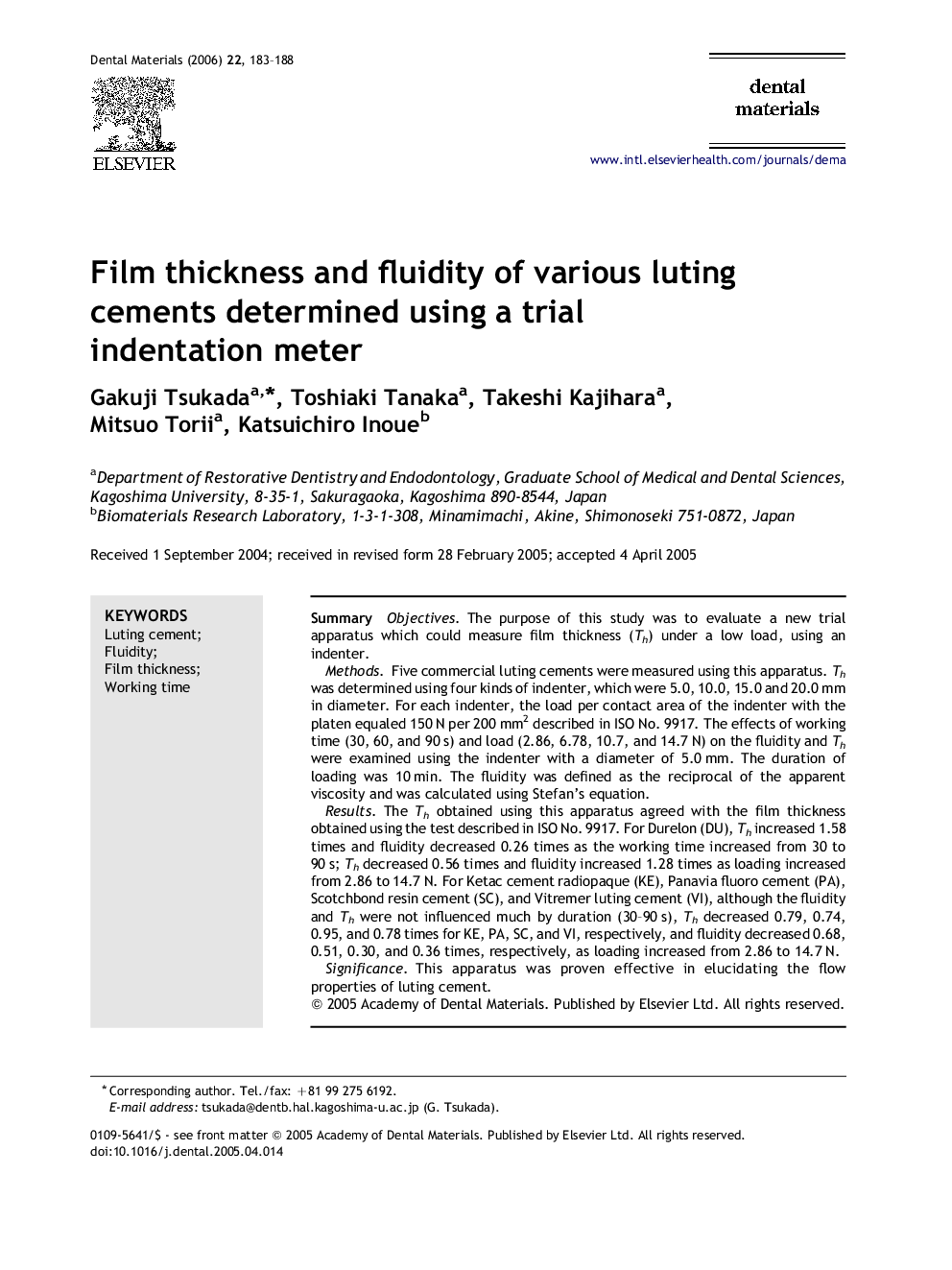| Article ID | Journal | Published Year | Pages | File Type |
|---|---|---|---|---|
| 1423474 | Dental Materials | 2006 | 6 Pages |
SummaryObjectivesThe purpose of this study was to evaluate a new trial apparatus which could measure film thickness (Th) under a low load, using an indenter.MethodsFive commercial luting cements were measured using this apparatus. Th was determined using four kinds of indenter, which were 5.0, 10.0, 15.0 and 20.0 mm in diameter. For each indenter, the load per contact area of the indenter with the platen equaled 150 N per 200 mm2 described in ISO No. 9917. The effects of working time (30, 60, and 90 s) and load (2.86, 6.78, 10.7, and 14.7 N) on the fluidity and Th were examined using the indenter with a diameter of 5.0 mm. The duration of loading was 10 min. The fluidity was defined as the reciprocal of the apparent viscosity and was calculated using Stefan's equation.ResultsThe Th obtained using this apparatus agreed with the film thickness obtained using the test described in ISO No. 9917. For Durelon (DU), Th increased 1.58 times and fluidity decreased 0.26 times as the working time increased from 30 to 90 s; Th decreased 0.56 times and fluidity increased 1.28 times as loading increased from 2.86 to 14.7 N. For Ketac cement radiopaque (KE), Panavia fluoro cement (PA), Scotchbond resin cement (SC), and Vitremer luting cement (VI), although the fluidity and Th were not influenced much by duration (30–90 s), Th decreased 0.79, 0.74, 0.95, and 0.78 times for KE, PA, SC, and VI, respectively, and fluidity decreased 0.68, 0.51, 0.30, and 0.36 times, respectively, as loading increased from 2.86 to 14.7 N.SignificanceThis apparatus was proven effective in elucidating the flow properties of luting cement.
